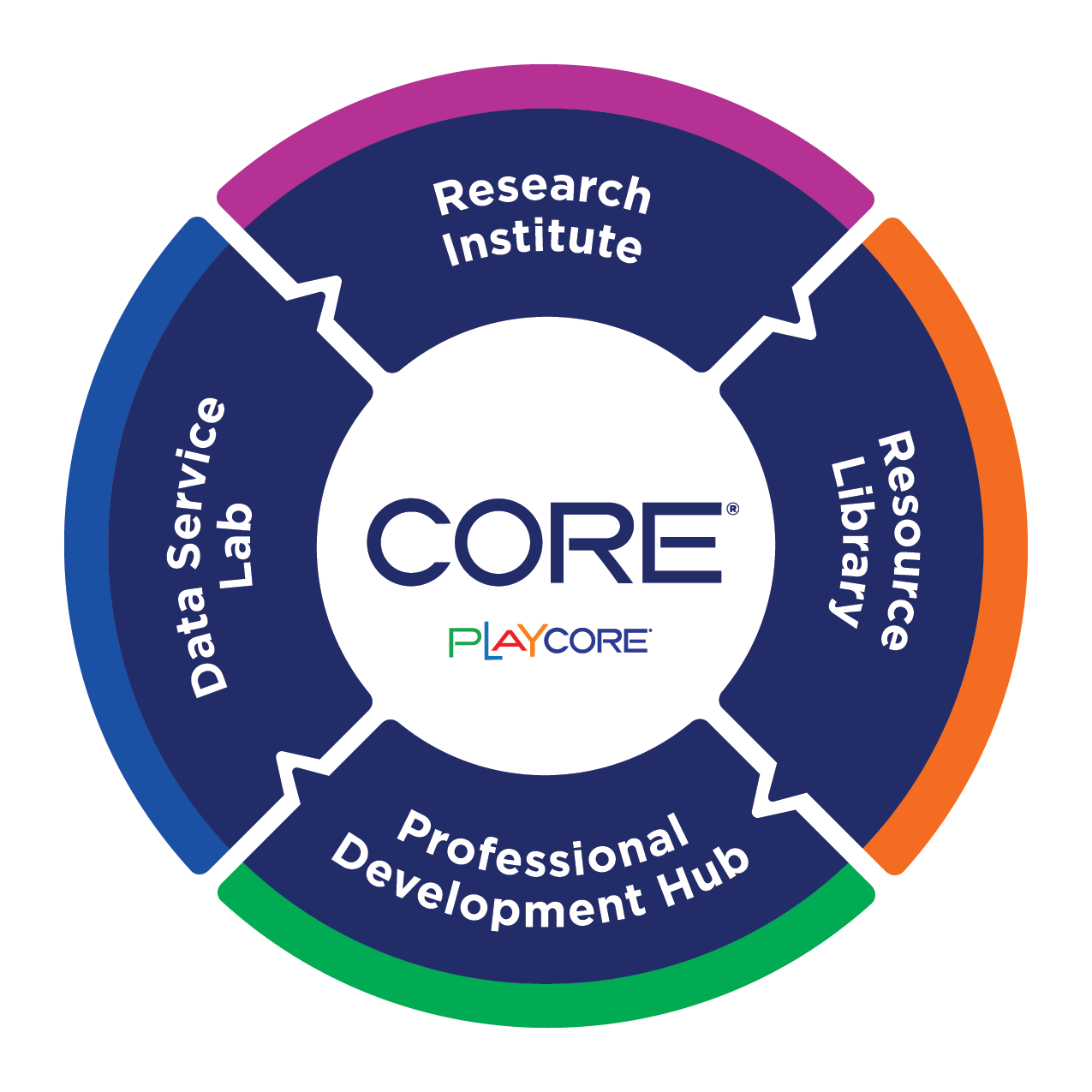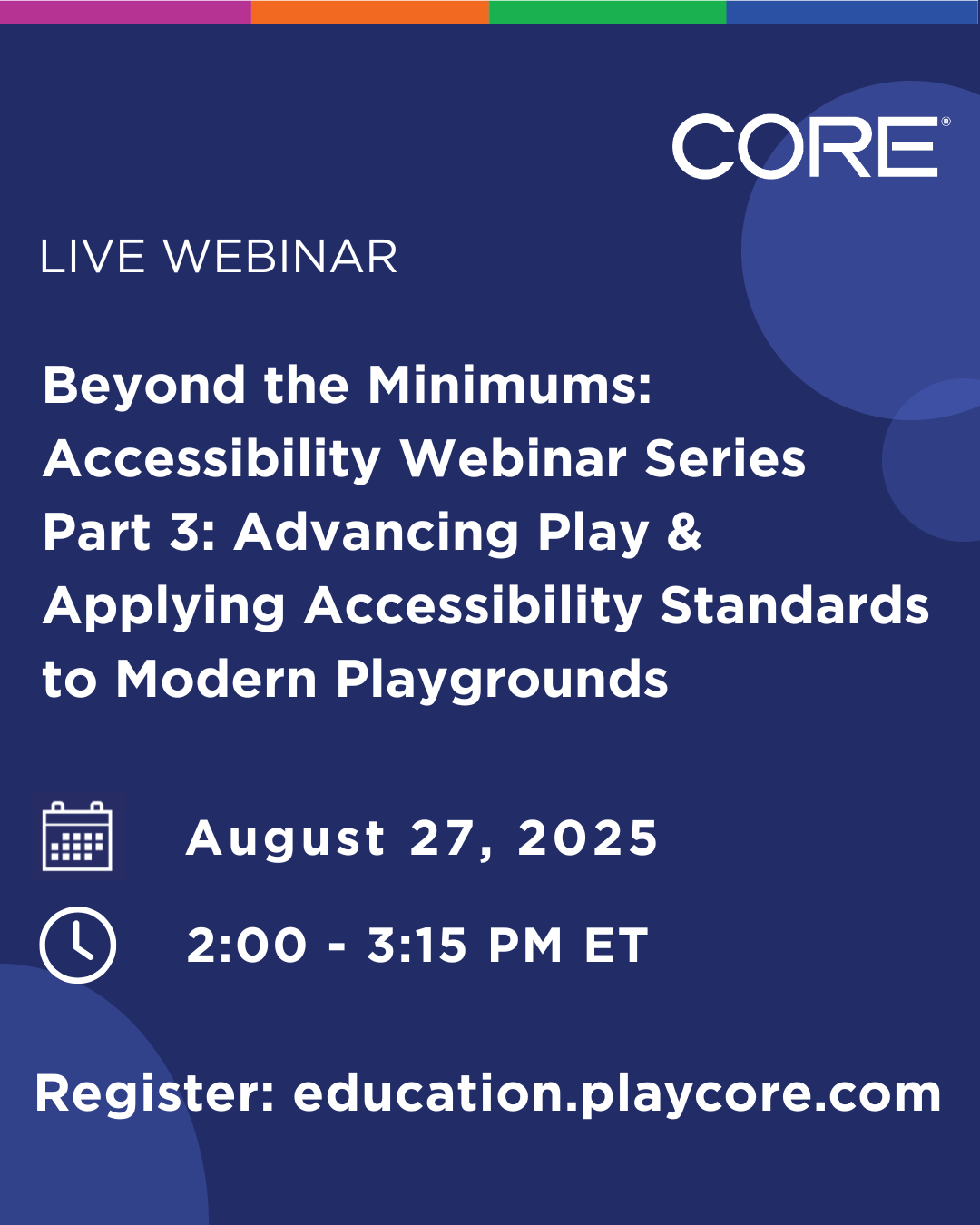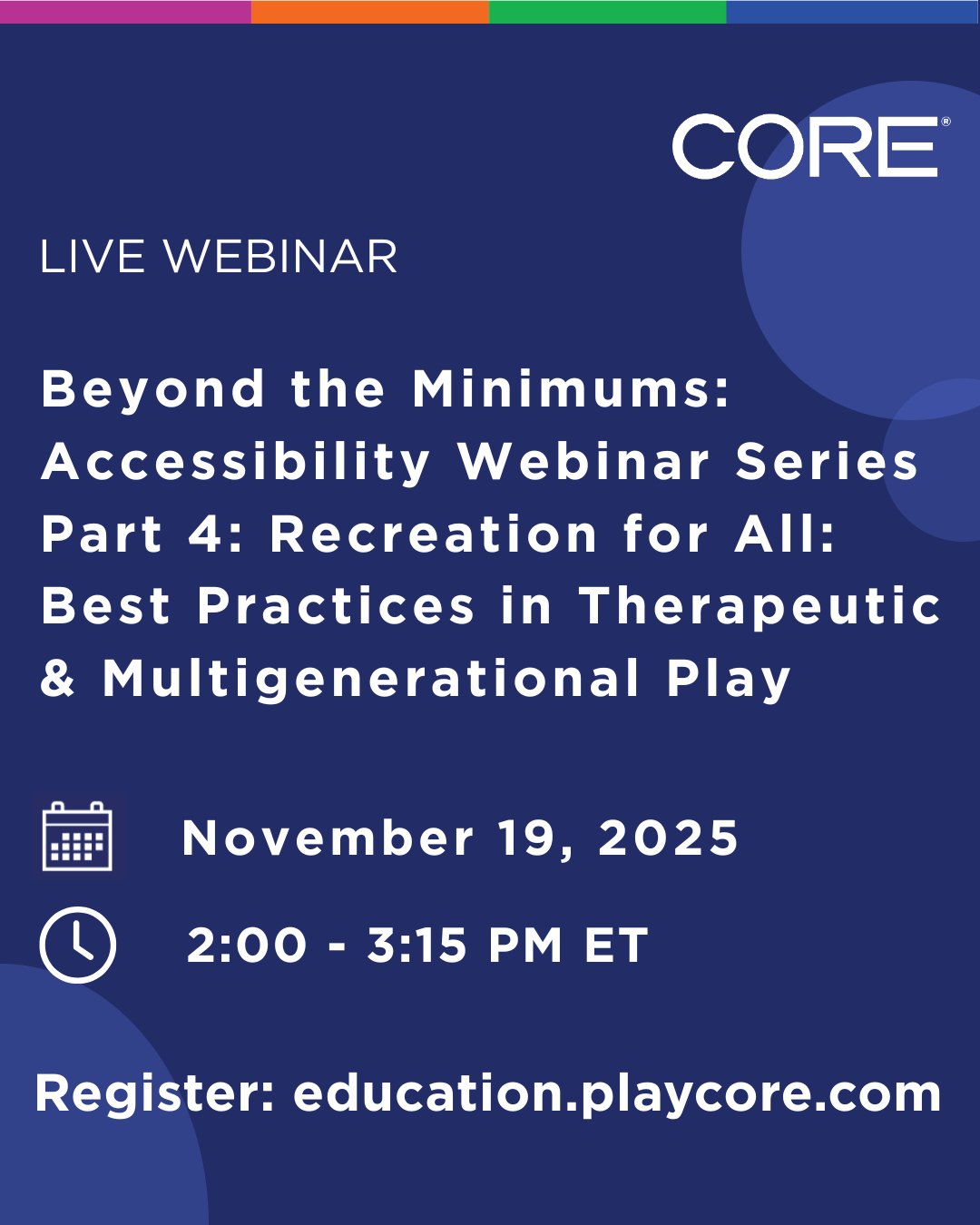

Learn and earn CEUs with the CORE Professional Development Hub.
By combining the knowledge from our Research Institute and Resource Library, we offer complimentary world-class learning opportunities where professionals can share learning and earn Continuing Education Units (CEUs) through a variety of tailored events and diverse topics.
Create an account and browse the opportunities below to start learning today!
Upcoming Live Virtual Events
-
Contains 4 Component(s), Includes Credits Includes a Live Web Event on 07/15/2025 at 2:00 PM (EDT)
Play isn’t just for children—it’s a powerful contributor to wellness across the lifespan. This cross-generational session explores how play impacts physical, emotional, and social health, featuring neuroscience insights, lived experiences, and actionable takeaways for today’s recreation professionals.
-
Register
- Prices available after logging in
- More Information
-
Register
-
Contains 4 Component(s), Includes Credits Includes a Live Web Event on 08/06/2025 at 2:00 PM (EDT)
Discover how inclusive playgrounds support active play for children of all abilities. In this session, we will share research using GPS and accelerometer data to track. where and how third-grade children—with and without disabilities—play during recess. Findings reveal key differences in playground equipment use and activity levels, with children with disabilities slightly more active overall. Learn how the evidence-based design best practices of the 7 Principles of Inclusive Playground can guide data-informed decisions to create engaging, equitable spaces for every child.
-
Register
- Prices available after logging in
- More Information
-
Register
-
Contains 4 Component(s), Includes Credits Includes a Live Web Event on 08/27/2025 at 2:00 PM (EDT)
The accessibility standards for playgrounds have been the minimum requirement for all newly constructed and altered playgrounds for 13 years, yet their application remains inconsistent and often misunderstood in new playground designs. Ensuring compliance while fostering inclusive and engaging play experiences for all requires a deep understanding of both the ADA Standards and ASTM public playground safety requirements. Join Jennifer Skulski and Bill Botten, both national experts in the accessibility of playgrounds, as they address some of the most complex and frequently asked questions surrounding playground accessibility. This session will explore the practical application of accessibility requirements, clarify common misconceptions when integrating new play trends, and examine the ongoing challenge of selecting and maintaining accessible playground surfacing. Attendees will gain actionable insights to enhance accessibility and inclusion in playground design beyond the minimum standards. This webinar includes real-time captioning. Video remote interpreting (VRI) is provided upon request. To request video interpreting services and/or resources in an alternate format, please email core@playcore.com at least two weeks prior to the live webinar date.
-
Register
- Prices available after logging in
- More Information
-
Register
-
Contains 4 Component(s), Includes Credits Includes a Live Web Event on 11/05/2025 at 2:00 PM (EST)
From Boomers to Gen Alpha, it's not uncommon for aquatic facilities to see five generations visiting for wellness and play opportunities. Join the leadership from the Association of Aquatic Professionals as we discuss trends in aquatic design to meet the needs of guests of all ages and abilities and dig into programming ideas that can be incorporated into new and innovative spaces as well as traditional aquatic facilities.
-
Register
- Prices available after logging in
- More Information
-
Register
-
Contains 4 Component(s), Includes Credits Includes a Live Web Event on 11/19/2025 at 2:00 PM (EST)
Parks and recreation spaces should provide meaningful opportunities for individuals of all ages and abilities through inclusive, thoughtful design and programming. This panel discussion will bring together experts in therapeutic recreation, accessibility, and community engagement to explore how inclusive multigenerational recreation fosters well-being, social connection, and a sense of belonging. Panelists will share best practices for integrating therapeutic recreation principles into programs, ensuring all individuals—regardless of age, ability, or background—can fully participate in play, recreation, and social experiences. This session is part of the four-part Beyond the Minimums webinar series. Real-time captioning will be provided. Video remote interpreting (VRI) is available upon request. To request video interpreting services and/or alternative formats, please email core@playcore.com at least two weeks before the live webinar date.
-
Register
- Prices available after logging in
- More Information
-
Register
On-Demand Learning Events
-
Contains 4 Component(s), Includes Credits Recorded On: 04/03/2025
Discover how playful placemaking can transform the way you engage communities and design meaningful spaces. In this interactive session, we’ll demonstrate the power of play as a tool for visioning and engagement by working through real-world examples in real time. Participants will learn how playful strategies can spark creativity, build trust, and uncover the deeper needs of the communities they serve. Designed for both parks and recreation professionals and design professionals, this session will explore how combining play with the design process fosters inclusive, resilient, and community-driven environments. Whether you’re looking to strengthen your community engagement process or enhance your design approach, this session offers practical insights and techniques you can apply immediately. Join us as we bring a project to life using playful placemaking methods, and leave inspired to reimagine the possibilities for your own work.
-
Register
- Prices available after logging in
- More Information
-
Register
-
Contains 4 Component(s), Includes Credits
The Unleashed: Off-leash Dog Park Design Trends and Planning Tips guidebook helps communities effectively advocate for the many benefits of off-leash dog parks. Dog parks provide enjoyable ways to recreate and exercise for both dog owners and their dogs. They also create community destinations. Research shows there are many positive effects for individuals that own a dog(s); as well as health and social benefits of owning a dog, caring for it, and recreating outdoors with pets. In addition, design considerations and case study examples are outlined to effectively design a dog park and champion initiatives that provide meaningful outcomes supporting overall health and social benefits for the community.
-
Register
- Prices available after logging in
- More Information
-
Register
-
Contains 3 Component(s), Includes Credits
In order to ensure equitable use by all, aquatic agencies and facilities must understand, embrace and respond to inclusive guidelines and programming, align to community needs, and implement innovative ways to offer environments that serve diverse individuals. This session will explore evidence-based health benefits of water immersion, share meaningful facility design strategies, and review ADA and ABA guidelines to make your facility a place for everyBODY to enjoy.
-
Register
- Prices available after logging in
- More Information
-
Register
-
Contains 6 Component(s), Includes Credits
As climate change accelerates, urban flooding and water mismanagement pose significant challenges for cities worldwide. This session explores innovative, nature-based solutions from three global leaders in landscape architecture—Kongjian Yu (China), Jasper Jugtenburg (Netherlands), and Mia Lehrer (United States). Learn how the "sponge cities" concept, blue-green infrastructure, and adaptive urban design can transform water from a threat into a resource.Through groundbreaking case studies and visionary design approaches, this session will reveal how landscape architects can shape more resilient, sustainable, and water-conscious cities. Join us for an inspiring discussion on designing with water, rethinking infrastructure, and creating the next generation of climate-adaptive urban environments. Playcore is honored to partner with The Cultural Landscape Foundation on this series as they continue to set the bar and produce beautiful content that highlights the importance of Landscape Architecture and its critical role in connecting people to places.
-
Register
- Prices available after logging in
- More Information
-
Register
-
Contains 4 Component(s), Includes Credits
Join us for our "Summer Programming Survival Guide" webinar, designed to equip park and recreation professionals with essential strategies for a successful summer season. This engaging session will cover best practices for summer planning, leadership techniques with a social equity focus, and methods to prevent burnout. Additionally, discover creative ideas to celebrate Parks and Recreation Month and ensure your community enjoys a memorable and inclusive summer.
-
Register
- Prices available after logging in
- More Information
-
Register
| Access Date | Quiz Result | Score | Actions |
|---|
Please Login
Search
Site Feedback
Please help us improve the experience by providing your feedback below!







